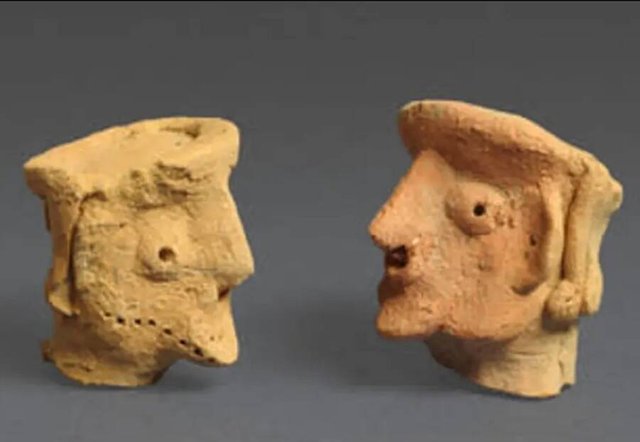Archaeologist Says He Found The ‘Face Of God’ While Examining 3,000-Year-Old Artifacts
Several head figurines and other artifacts were found among different sites within the territory where the ancient Kingdom of Judah once stood.
Several head figurines dating back to the 9th century may have been meant to depict the ‘face of God.’
Sometimes archaeologists uncover the most shocking discoveries while examining ancient artifacts. For Yosef Garfinkel, head of the Institute of Archaeology at the Hebrew University of Jerusalem, what he found during an inspection of 3,000-year-old artifacts may have been the ‘face of God.’
Archaeologist Says He Found The ‘Face Of God’ While Examining 3,000-Year-Old Artifacts
Several head figurines and other artifacts were found among different sites within the territory where the ancient Kingdom of Judah once stood.

The Jerusalem PostSeveral head figurines dating back to the 9th century may have been meant to depict the ‘face of God.’
Sometimes archaeologists uncover the most shocking discoveries while examining ancient artifacts. For Yosef Garfinkel, head of the Institute of Archaeology at the Hebrew University of Jerusalem, what he found during an inspection of 3,000-year-old artifacts may have been the ‘fac
ut other archaeologists aren’t so sure about his claims.
According to The Jerusalem Post, Garfinkel and his team studied several male figurines that were found dispersed among three different sites in the territory where the ancient Kingdom of Judah would have stood.
According to Garfinkel, these sculptures represented a visible image of Y-H-W-H — read ‘Yahweh’ — the Tetragrammaton name of ‘God’ based on Jewish tradition. This finding would mean worshippers created depictions of God’s likeness on religious artifacts, otherwise known as idolatry, a practice forbidden in biblical scriptures such as the Torah.
The publication of Garfinkel’s findings, which was the cover story of the August issue of Biblical Archaeology Review (BAR), has caused a stir among religious scholars in Israel, with many accusing the researcher of indulging in sensationalist news.
Garfinkel argues that the Hebrew Bible described God as a ‘rider,’ making the connection to this horse with an invisible rider.
“When we uncovered the first figurine in Kirbhet Qeiyafa in 2010, there were no parallels to it,” said Garfinkel, who is co-director of the excavations at Kirbhet Qeiyafa. “Only two years later two similar heads were found in Tel Moza. When I saw how similar these three heads were, I started looking for more items, and I found two similar objects in the Moshe Dayan Collection at the Israel Museum.”
The clay figurines had features that resembled eyes, ears, and a nose. Photos of the 9th-century artifacts do appear to bear facial features, though quite rough in their shapes.
Garfinkel said the artifacts in Tel Moza were uncovered inside a temple, while in Kirbhet Qeiyafa they were found in an administrative building on top of the site, adding, “In both cases, we are not speaking about private but public spaces.”